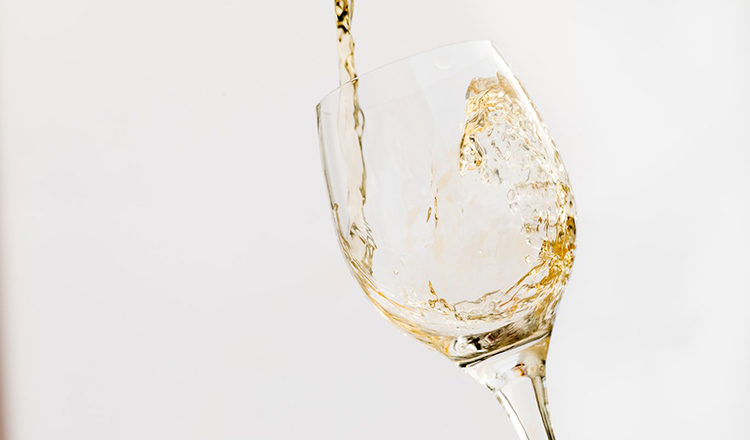Great food and wine go hand in hand, but when the-things-to-know-about-wine are seemingly infinite, it can be difficult (and intimidating!) to choose a wine.

In this series, we'll explore the fundamentals of wine, from grape varietals to tasting, so that you can tackle a wine list with confidence.
Up first is a brief dive into perhaps the most ubiquitous of the grape varietals: Chardonnay.
Chardonnay became the darling of the worldwide wine industry in the late 1980s, when consumers began to feel comfortable requesting wines by specific grape type. Chardonnay caught on in a big way, and more and more grape growers planted it so that more and more winemakers could produce it.
Chardonnay grows just about everywhere in the modern wine world. Unless forbidden by law to appear in the vineyards of a particular wine region of the Old World (such as in Bordeaux, France), Chardonnay vines show up in both cool and warm climates and in both the Northern and Southern hemispheres.
Many people believe that Chardonnay is “the grape that tastes like oak,” and that’s understandable, because more often than not, Chardonnay is fermented or aged in oak barrels, or in countries where it is legal, exposed to oak chips or oak essences. Unfortunately, some of the wines made from Chardonnay, including some expensive ones, are over-oaked, which throws off the balance of flavors in the wine. Thankfully, these days we taste far fewer wines that taste like lumber and more that taste like fruit.
A well-made Chardonnay should contain flavors of apples and citrus. Its profile can be anywhere from light, crisp, and green or underripe when the grapes are grown in a cool climate, to rich in tropical fruit notes, like pineapple and mango, when the grapes are grown in warmer growing regions. When oak is added to the equation, the wine takes on both sweet vanilla and buttered toast flavors.
Note that not all Chardonnay-based wines are oak-aged or oak-fermented, especially those from cooler climates, and some of these wines, produced in stainless steel and featuring refreshing acidity, are gaining in popularity.
Grape growers and winemakers like to work with Chardonnay for several reasons. First, the vine grows in varied climates and soils, and even though classic Chardonnay-based wines are made from cool-climate grapes, like those that grow in Burgundy, France, or the Russian River Valley of California, acceptable wine is produced from grapes that grow in warm wine regions, such as Australia’s Hunter Valley. Chardonnay grapes grow best in stony soil that is rich in calcium, but will produce marketable fruit in far more fertile soils.
Second, Chardonnay’s yield in the vineyard is pretty flexible. As usual, the best wines begin with low-yielding vines, but quite drinkable Chardonnay can be produced from ripe grapes grown in relative abundance.
Third, Chardonnay grapes produce a base wine that is fairly neutral and needs the signature of the winemaker to create a style for the finished wine. Unlike other fine wines that are highly regarded for their raw materials (grapes) and “noninterventionist” winemaking techniques, successful Chardonnay needs the hand of the winemaker to define its style.
There are artisan Chardonnay winemakers whose signature is unique and whose wines can be quite rare and expensive. More often, however, Chardonnay is the cash cow for a wine producer, and in order to meet consumer expectation, the signature of that producer becomes more of a rubber stamp than an autograph. While the best Chardonnay producers achieve balance and quality in their wines through a delicate touch and restraint, far too many Chardonnay producers pull out all the technical stops and end up with a wine geared to please the palates of a mass audience.
Nevertheless, Chardonnay does deserve its prominent place in the wine world because, at its best, it is responsible for some of the best dry white wines made in both the Old World and the New World; it is also an important component in fine sparkling wines. When grown in a cool climate, Chardonnay will retain enough acidity to keep the wine tasting fresh and to balance the ripe apple flavors that are the benchmark of this grape. The very best examples of cool-climate Chardonnay wines can develop a depth and length of flavor that will make for truly memorable experiences.
